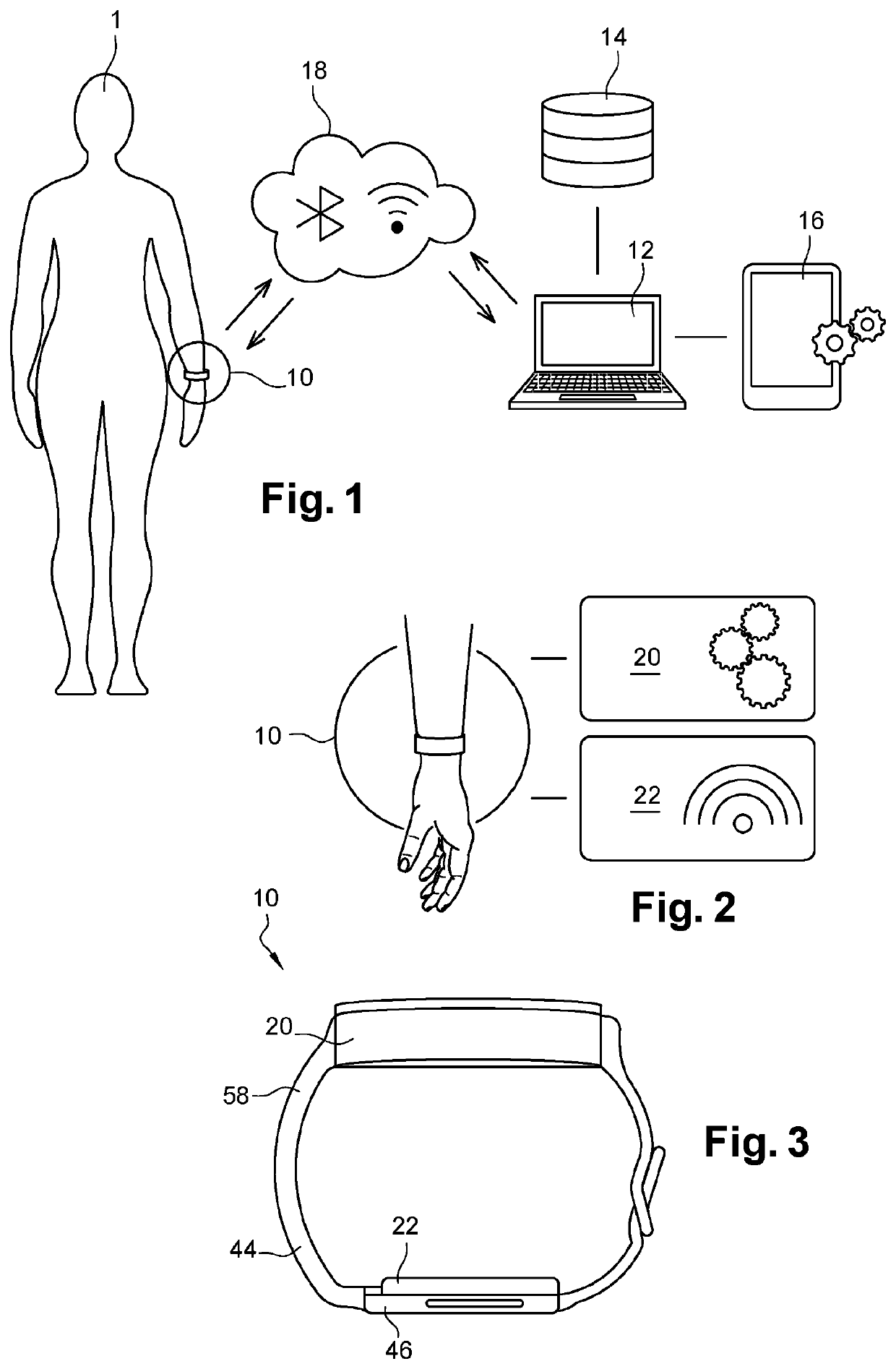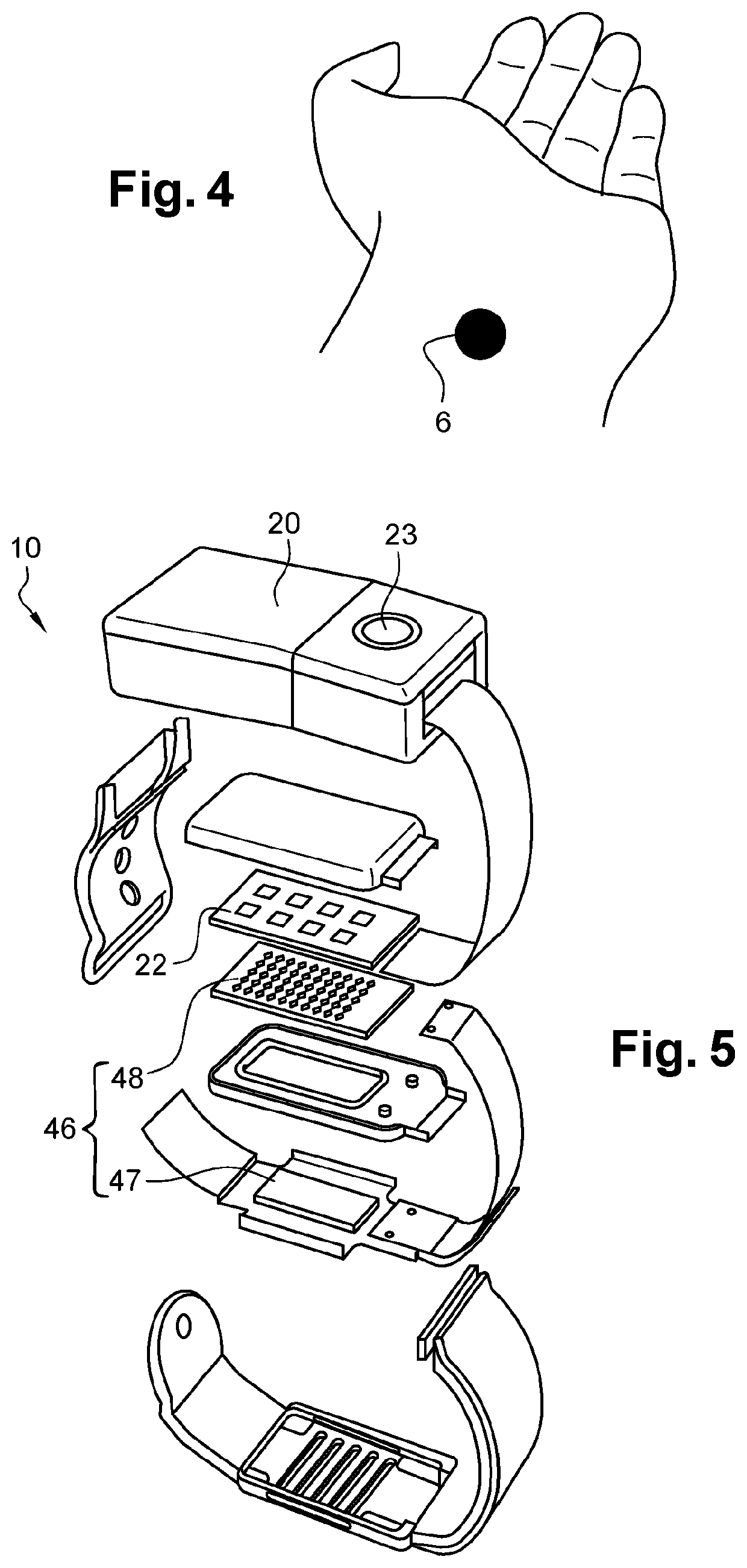Module and device for emitting electromagnetic waves
- Summary
- Abstract
- Description
- Claims
- Application Information
AI Technical Summary
Benefits of technology
Problems solved by technology
Method used
Image
Examples
Example
[0098]FIG. 4 illustrates a first embodiment of such a device;
[0099]FIGS. 7 to 15 are diagrams of the components of a wave transmission module according to a first embodiment;
[0100]FIGS. 16 and 17 are illustrations of such a module respectively without and with heat sink;
[0101]FIG. 18 is an illustration of a radiation of the module of FIGS. 14 and 15;
[0102]FIGS. 19 and 20 are illustrations of use according to the second and third embodiments of the invention; and
[0103]FIGS. 21 to 29 illustrate components of a module according to other embodiments of the invention.
[0104]FIG. 1 illustrates the general framework of the invention. Patient 1 has chronic pain. He wears a device 10, according to a first embodiment and a first implementation of the invention, which treats the pain by transmitting electromagnetic millimeter waves to the skin of patient 1's wrist. In this case, this device 10 is in the general form of a wristwatch, and is affixed around the wrist in the same way as a watch. Th...
Example
[0117]Thus, in a second embodiment, illustrated in FIGS. 21 to 23, the module's performances are identical. The difference is that an ASIC is coupled to four antennas on a surface of 10×6.25 mm Therefore, this ASIC / antenna pair covers a skin surface of 0.625 cm2, on a PCB substrate 1 mm thick. Repeated four times side by side in the millimeter module illustrated in FIGS. 21 to 23, the four ASICs are each placed in a different “BGA” housing, whose size is 2.2 mm×2.2 mm×1 mm. The module, which then includes two rows of eight antennas and 4 ASICs (4 housings), thus makes it possible to continuously irradiate 2.5 cm2 of skin surface.
[0118]An antenna array 91 according to this embodiment is illustrated in FIG. 21. Array 91, said to be a “resonant cavity” array, comprises four layers. The layer 92 allows the routing of digital and power signals. The second layer 93 represents the access lines to the antennas. The third layer 94 represents the coupling lines. Lastly, the fourth layer 95 is...
PUM
 Login to View More
Login to View More Abstract
Description
Claims
Application Information
 Login to View More
Login to View More - R&D
- Intellectual Property
- Life Sciences
- Materials
- Tech Scout
- Unparalleled Data Quality
- Higher Quality Content
- 60% Fewer Hallucinations
Browse by: Latest US Patents, China's latest patents, Technical Efficacy Thesaurus, Application Domain, Technology Topic, Popular Technical Reports.
© 2025 PatSnap. All rights reserved.Legal|Privacy policy|Modern Slavery Act Transparency Statement|Sitemap|About US| Contact US: help@patsnap.com



